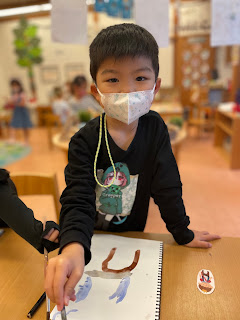33: A Different Perspective
“Stories don’t give answers, but they do offer perspective.”
-Dan B. Allender
They say that there are two sides to every story. Sometimes, what we perceive doesn’t give us the whole picture, but rather a snippet of the actual truth. When we read stories, it’s easy to root for the protagonist as the narratives often revolve around the main character. Oftentimes, it would take an extra step before we wonder what the stories of the other characters are —especially the antagonist — that made them into who they are.
In the IB, perspective is a valuable concept that we teach in the classroom as it provides our students with a different lens on how they view the world and their experiences. According to the IB, different perspectives lead to different interpretations, understandings, and findings. This is particularly useful in reading stories, as it teaches us to wonder, inquire, discover, and decide about other narratives within the story that remain untold. It also broadens our viewpoints and teaches us to think critically.
This week, the kindergarteners revisited their well-loved fairytale characters and the stories that they know.
Cinderella is the lady who wasn't treated well by her family.
Snow White is the princess who was despised by her stepmother.
Belle is the lady who met a beast.
The Gingerbread Man is the cookie who kept on running.
Pinocchio is the boy who doesn't tell the truth.
Humpty Dumpty is the egg who sat on a wall and got into an accident.
The Three Little Pigs are brothers who outwit a wolf.
Prince Charming is the man who saves the Princesses.
Little Red Riding Hood is the girl who visits her grandmother.
Rapunzel is the princess who was taken by an old woman and left in a tower.
These are the stories that we grew up with, and have passed on to the children. But I asked the Kindergarteners,
"If these were characters in your own story, what would be different about them?"
So the children created their own depiction of the characters that we have all grown to love.
It is a fairytale with a twist -- or what we often call a Fractured Fairytale. What I love about these types of stories is that it gives us a different perspective of the narratives that we have all grown to love. In this story, the wolf isn't so bad after all.
They say that there are two sides to every story, and whoever they are, I couldn't agree with them more. I think that apart from teaching us perspective, these reimagined fairytales also teach us to judge a book not by its cover, but rather, by how it changes the way we see the world.
Have a good week ahead, everyone.
Your Kindergarten teacher,
Pam











































Comments
Post a Comment